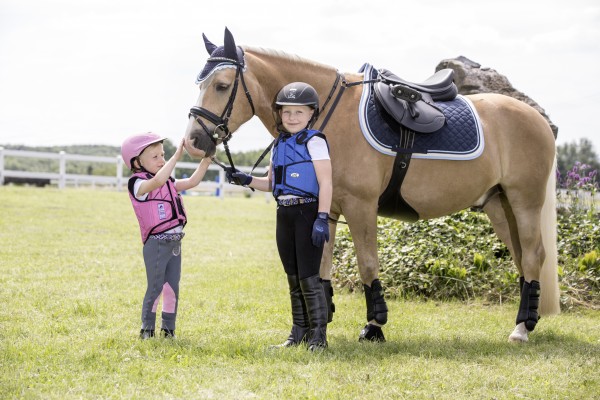Why we wait till something bad happen, till we change something? As a rider you may ask yourself this question, but despite everything you usually take your time with the decision to protect your life and health. Especially riding with a safety vest is becoming a bigger and bigger topic in equestrian sports. The trend to more security comes and many people reach for the safety vest. But here, too, the question arises, "What is important when buying a safety vest?"
A good riding safety vest complies at least with the European standard EN 13158 (level / protection class 2) and can protect against rib contusions, fractures, spinal injuries and paraplegia due to its filling of several layers of plastic. With approximately 90,000 riding accidents each year, safety vests can significantly minimize the risk of initial injury. When buying a safety vest, you should therefore make sure that the safety vest adequately protects the chest and spine. The three protection classes into which safety vests have been divided provide information on what basic protection the vest has. EN 13158 - Level 1 safety vests offer only basic protection and are more suitable for jockeys. EN 13158 - Level 2 models offer medium protection. They provide a compromise between comfort and protection for less risky situations. EN 13158 - Level 3 riding vests offer the maximum safety protection and protect most effectively.
The European standard EN 13158, is the current standard for safety vests. They give regulations about the minimum thickness at all points of the vest. When buying a vest, you should pay particular attention to good padding of the front and back parts, as well as padding of the shoulder parties and side parts. Shoulder and side parts that can be individually adjusted to the fit of the wearer by means of Velcro are especially recommended.
The most important criterion when buying a safety vest is that the back length fits. A safety vest that is too short will not properly protect the spine, while a safety vest that is too long will touch the saddle while riding and restrict the freedom of movement on the horse. Almost all riding vests have a Velcro closure in the front part, where the Velcro straps are usually colored red. If you can see the red Velcro when closing the vest, the vest is too small!
If you want to buy a tested and safe riding safety vest, you should read some test reports before buying, as these provide information about comfort, freedom of movement and cushioning protection in the event of a fall. The tests measure, among other things, the force that hits the safety vest. Safety vests with the additional BETA 2018 label, comply with the current BETA safety standard and are also retested annually for their protective performance.
Equestrian Safety
Write a comment
Related products




